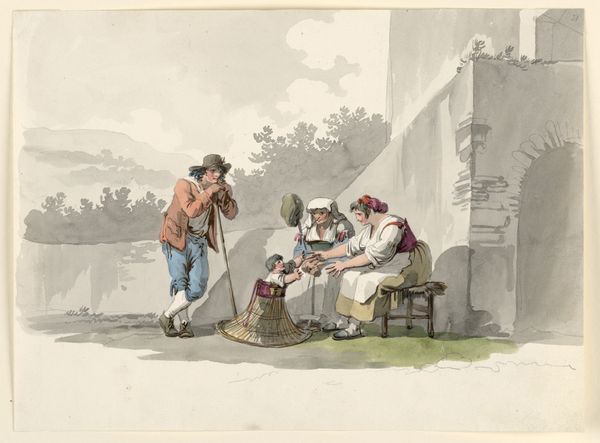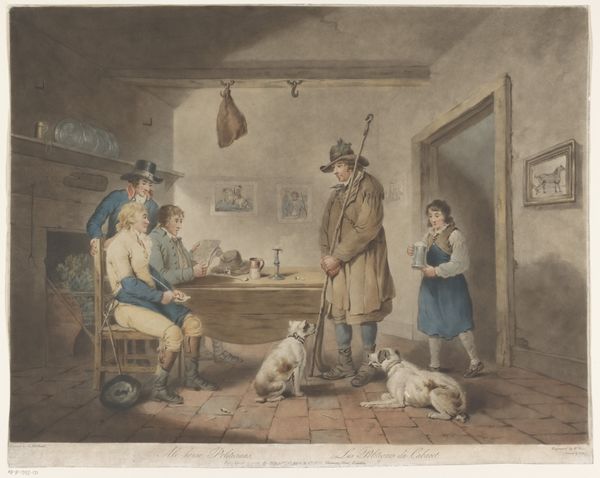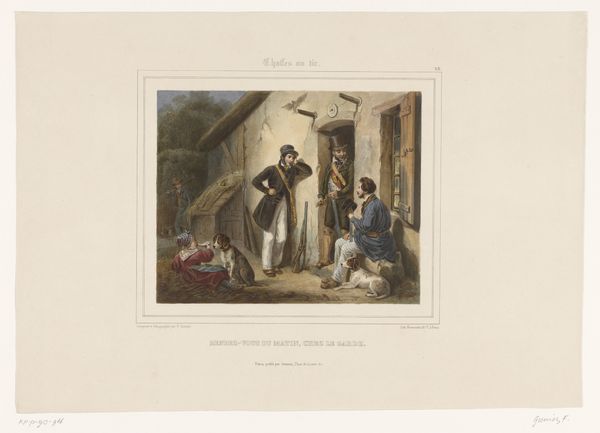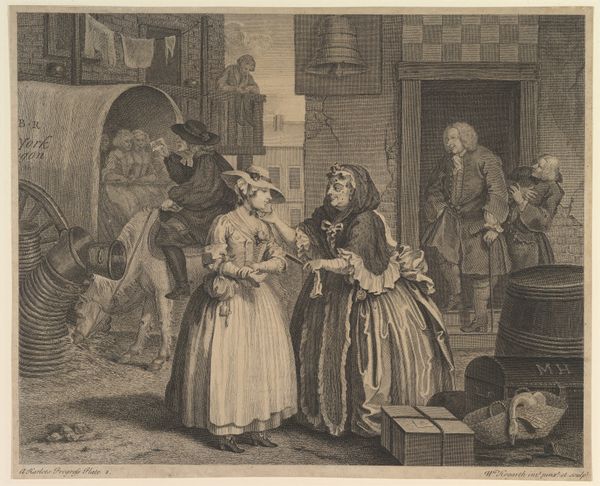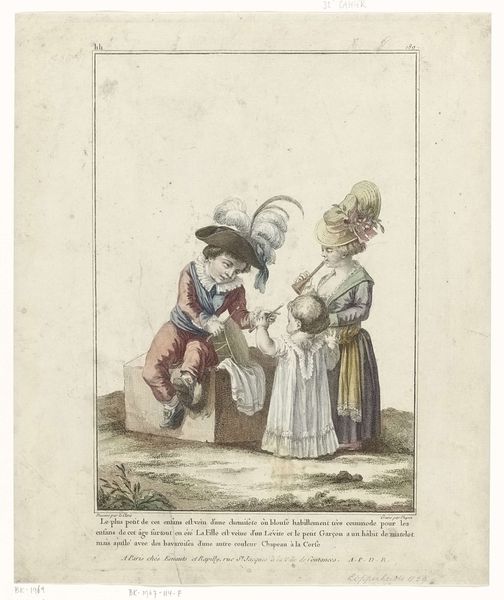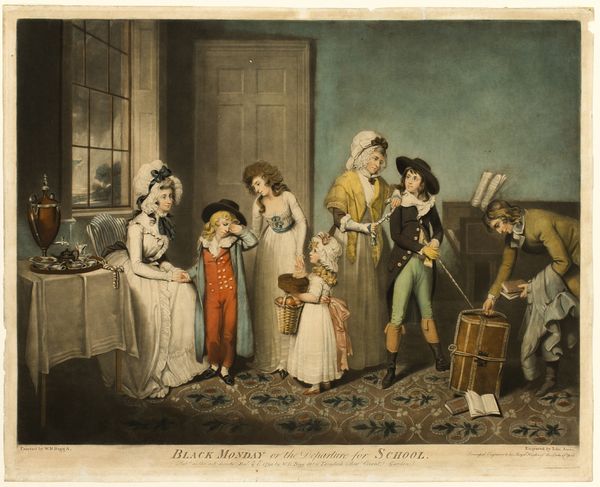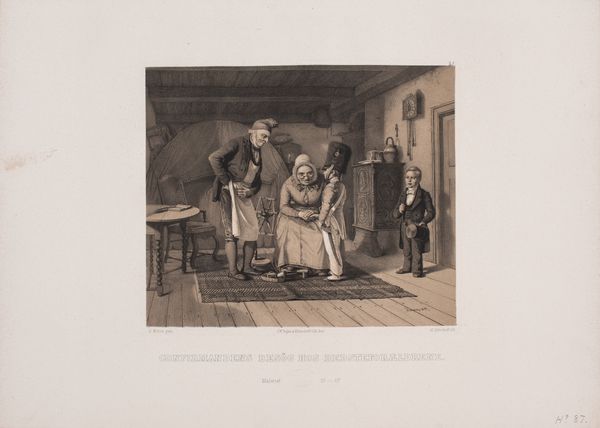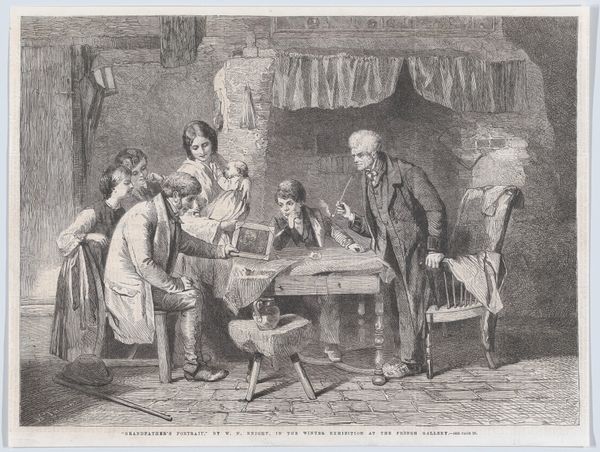
plein-air, watercolor
#
narrative-art
#
plein-air
#
figuration
#
watercolor
#
romanticism
#
watercolour illustration
#
genre-painting
#
watercolor
Dimensions: height 487 mm, width 604 mm
Copyright: Rijks Museum: Open Domain
Editor: So, this watercolour, "Visser komt thuis met zijn vangst", or roughly, "Fisherman coming home with his Catch," by William Ward from 1799… it feels staged, almost like a theatrical scene. What do you make of this genre painting? Curator: I see this work as reflecting a broader Romantic era idealization of domesticity and labor, especially the lives of working-class families. Ward presents us not with the hardship of fishing, but with its successful yield being brought into a comfortable home setting. How does that contrast with the socio-economic reality of the time? Editor: Well, fishing was obviously a tough way to make a living! Did art like this aim to gloss over those realities? Curator: Precisely! These images helped to construct a particular narrative that often benefited the wealthy patrons. The setting and figures are deliberately posed to convey this message of bucolic domestic contentment. The fact that it's watercolor suggests it's made for domestic consumption, to be hung perhaps in a comfortable room similar to this. Editor: So, the painting isn’t necessarily about representing reality, but about reinforcing certain social values? Curator: Exactly. It's a product of its time, shaping and being shaped by contemporary ideas about family, work, and social class. Consider where this was exhibited, who purchased such images. That would reveal volumes about the intended audience and message. What are your thoughts about how museums display work such as this today? Editor: I see your point. Museums, I guess, need to be very careful about the narratives they unintentionally support, to ensure we provide critical perspectives on art and its relationship to society. Curator: Indeed. By examining its context, we can start to understand both its original function and its continued resonance within contemporary culture. Editor: Thanks, I am starting to appreciate how history can really shed light and shape art. Curator: My pleasure; keep looking and keep asking those critical questions.
Comments
No comments
Be the first to comment and join the conversation on the ultimate creative platform.
